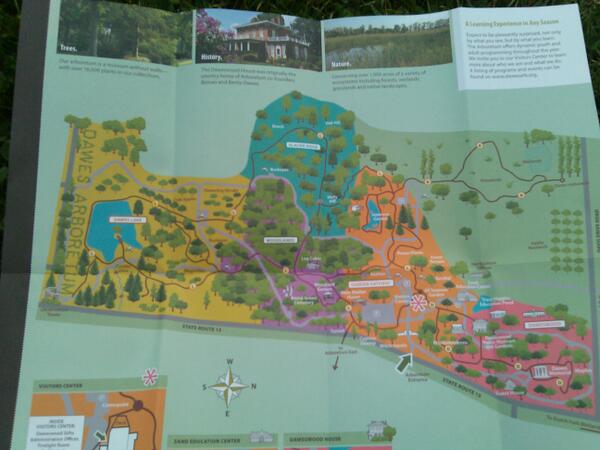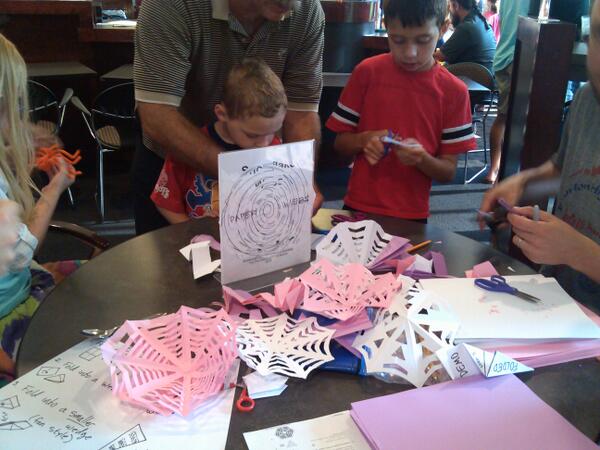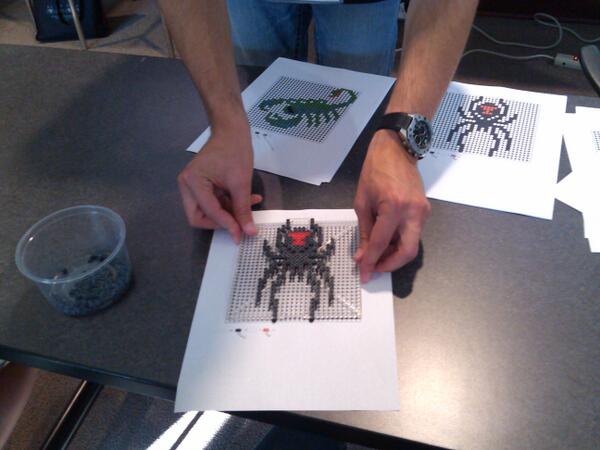Arachnology 2014 – Newark, Ohio
The 2014 meeting of the American Arachnological Society in Newark, Ohio, was hosted by Andrew Roberts of OSU Newark. I live-tweeted this conference for the many who could not attend and to preserve a record of the highlights. This is a read-from-the-bottom document.
AAS Home 2014 Meeting abstracts - Casual Night Video on GooglePlus - Other Meetings - About This Document
Travis Seaborn @TravisSeaborn Got home last night from #arachnids14 conference inspired and reinvigorated to work on my research and writing. So much fun. #science
J. Andrew Roberts @spiderprofessor Man, quiet here with all my spider friends gone. Thanks for a great meeting! See y'all next year! #arachnids14 #arachnids15
Nina Sandlin @nsandlin And now I guess it is time to go home. Thank you, everybody who was part of #arachnids14! 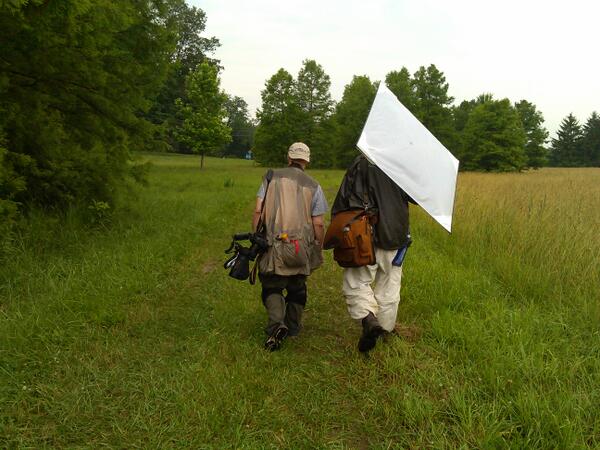
The #Arachnids14 Field Trip, June 24
Petra got a Callipodida... If you found something cool, please share! 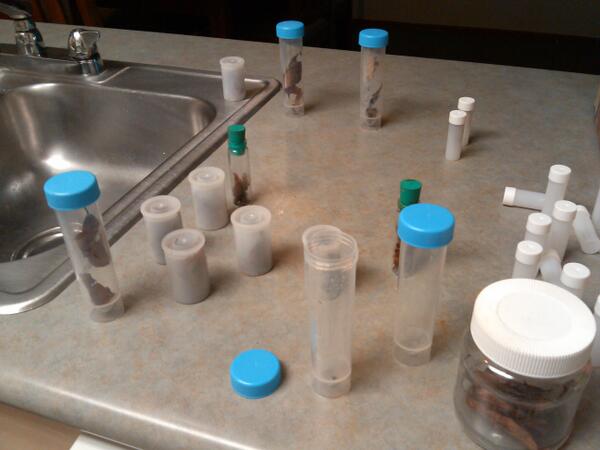
Now we have sorted & rehoused our finds... 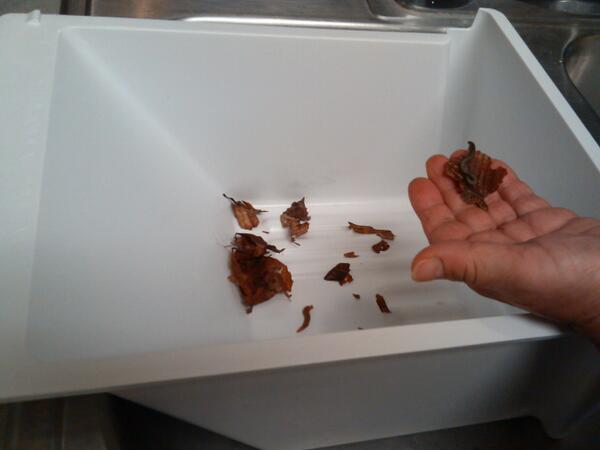
These were less abundant, maybe due to a preference for soggy cardboard 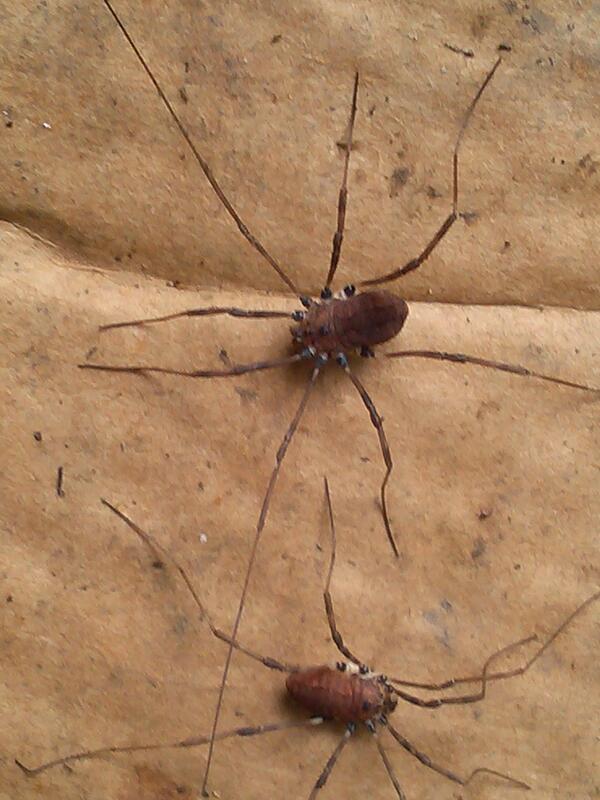
The woods were also full of these guys 
It was pretty wet & muddy, but the woods were full of these guys 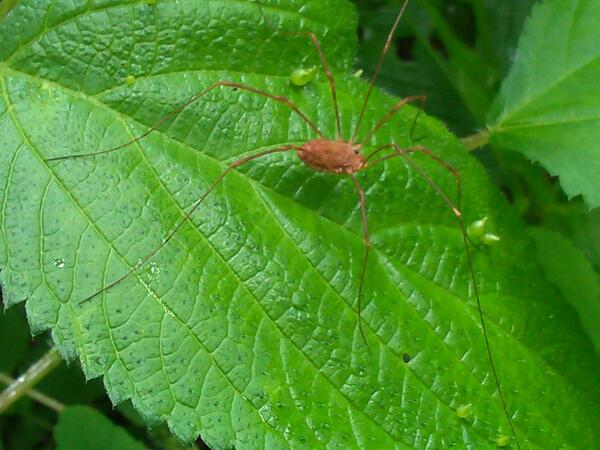
Labels for the #arachnids14 field trip (1 of 3 sites) - yell if you need some 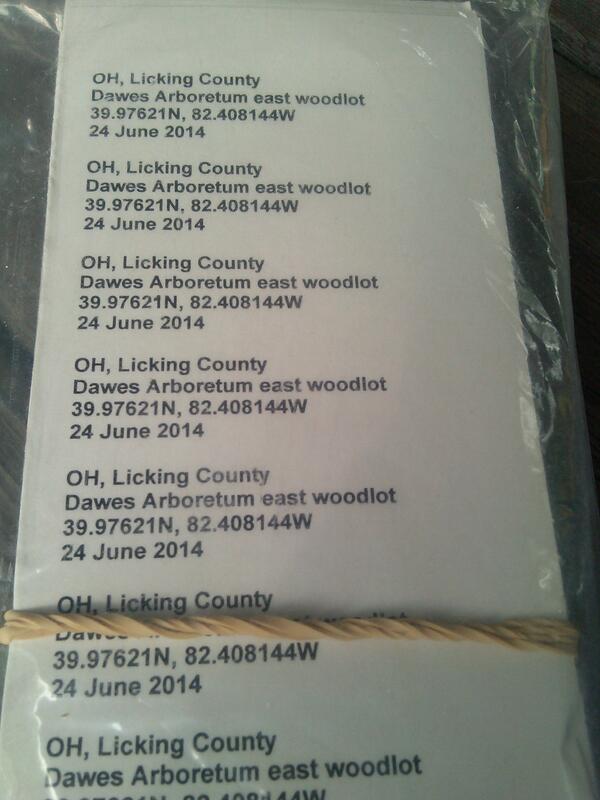
The #arachnids14 field trip was at the Dawes Arboretum, founded & named for this awesome individual 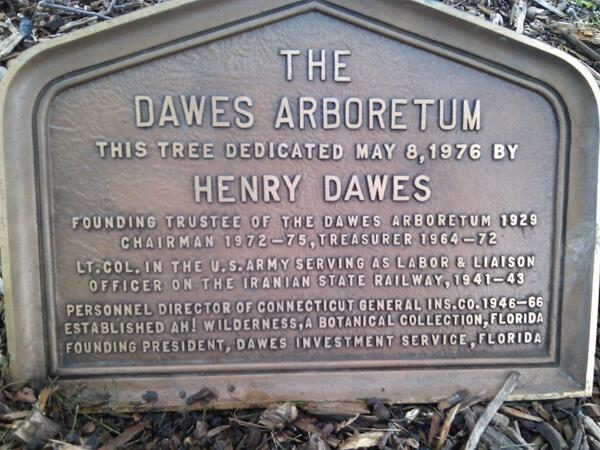
This is Rich Bradley's license plate 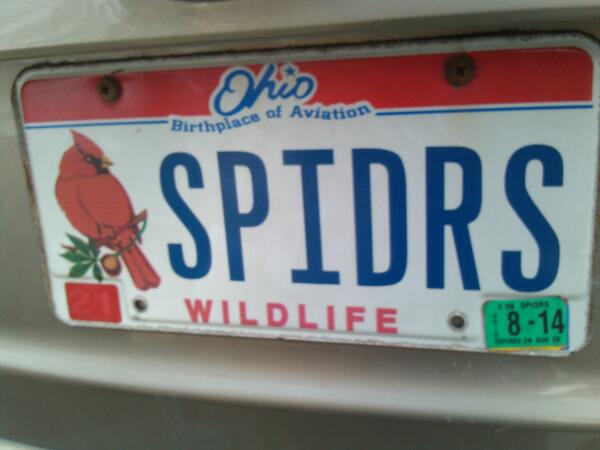
Ohio Spider Survey's Rich Bradley, our #arachnids14 field trip guide 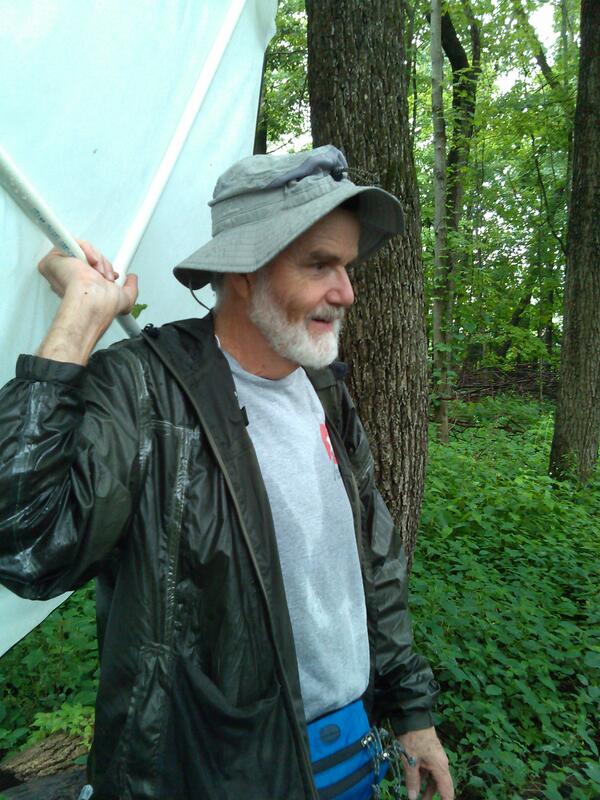
We're back from the #arachnids14 field trip. This was us waiting for the rain to stop 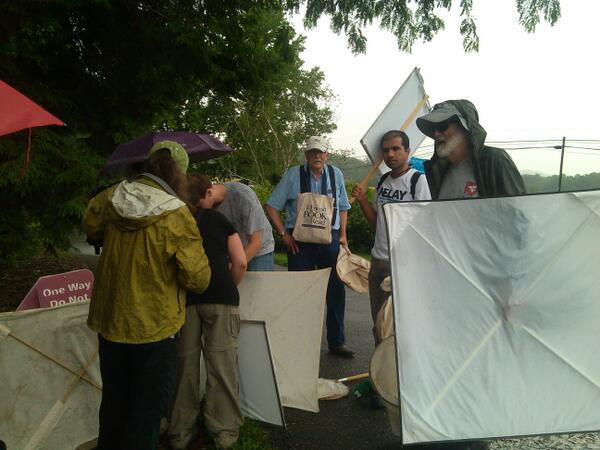
Kenny Chapin @KennyChapin Had a great time at #arachnids14. That all for making it happen!
Mr. Belcher @kyspiderguy Thanks for great time at the #AAS conference in #Newark Ohio.
Banquet and Auction, June 23
Chrissy Bell @thepinkwoobie Cards against Arachnids. 
A custom shirt 2B made by Cara Shillington (L) like one I'm modeling (R) went to #arachnids14 host @spiderprofessor 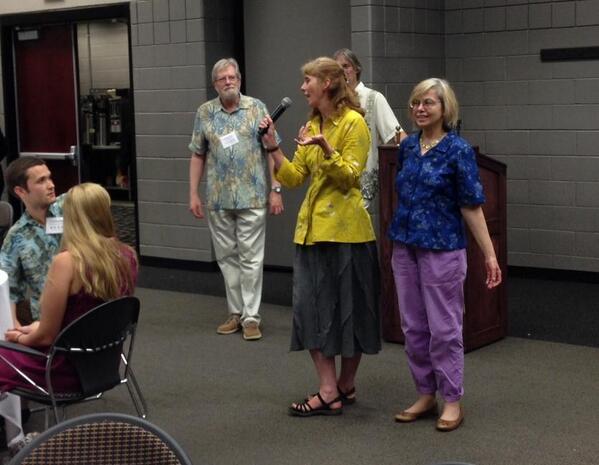
The non-silent auction brought in $2125, for a grand total of $2998 raised for student research
Sarah Shrader got this remarkable 1861 Blackwall for $250 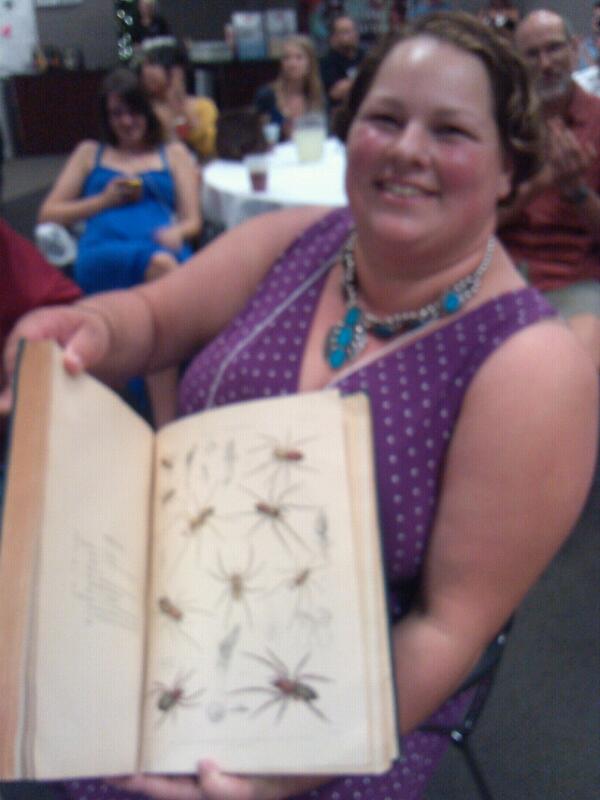
Fellow linyphiidist Brian Patrick just got this not-quite-describable spider objet for $75 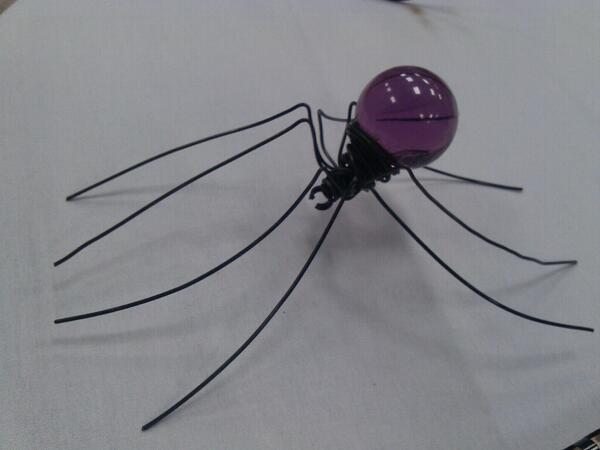
This piece of art went for $400 to Jeremy Belcher!! 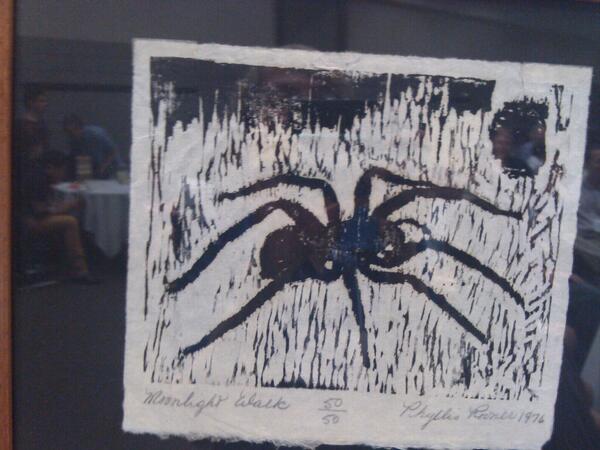
The silent auction took in $783 for student research!
3-vol Bonet w a card signed by Bonet himself went for $120 to Francisco Rivera from UNAM, Mexico! 
Now, results of the #arachnids14 silent auction are being read out... yours truly got Spiders of Connecticut at last! $36
Top award for the talks: Kristen Emata! [systematics of Calicina]
Awards for the talks: the runner-ups are tied: Chia-Chen Chang [conspicuous spider markings] & Skye Long [spider brain morphology]
Top poster award: Ashley Carey! [jumping spider eyes]
Student awards! Elizabeth Herrera runner-up poster award [simple embryonic staging system]
Chrissy Bell @thepinkwoobie Arachno-auction #arachnids14 
Monday afternoon, June 23
Could not resist sharing this characteristic posture of participants at an arachnology conference 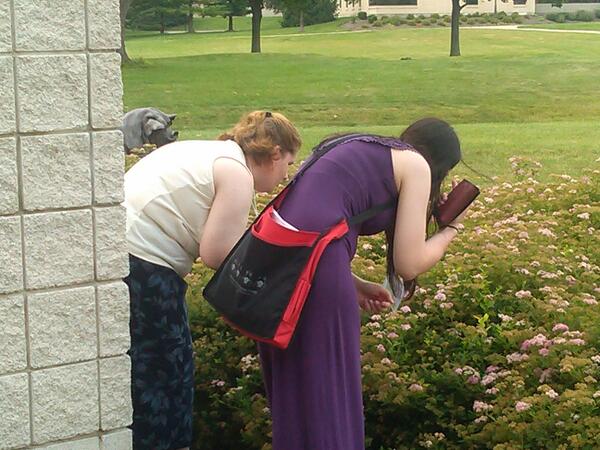
Karen Cangialosi @karencang #arachnids14 Nina Sandlin, tweeter extraordinaire for the AAS in action! 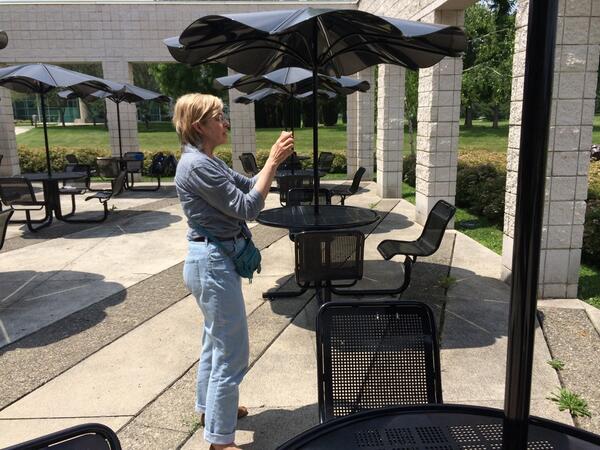
Patrick: Laura Ingalls Wilder sites near there; in Vermillion, national museum of musical instruments; McGovern legacy museum
Patrick: we also have a "corn palace"; prehistoric Indian village; Dakota Discovery Museum; Cabela's & a gun library
Patrick: Mitchell is the 5th-largest city in SD, with a population of 15,254 [2010 census figures]
Patrick: Pierre - pronounced "peer" like peer review - is one of only 5 capitals not on the Interstate system
Patrick: Mitchell is close to Sioux Falls, about 1 hr by car. "Hey, up here, people drive an hour to get ice cream."
Patrick: the 2015 meeting is June 19-23 at Dakota Wesleyan University in Mitchell SD, which is NOT near Mt. Rushmore
Next up: Brian Patrick, who will host next year's mtg in Mitchel SD, will give us a sneak preview
Vetter: on question "Have you ever had a bad experience w a spider? (describe)" some said, "Yes, I saw one"
Vetter: why dislike spiders: scary, creepy, sly; hide in shoes; cost of antivenin
Vetter: why dislike spiders: icky, creepy sneaky & skeezy; jump on you; webs; "they suck"; "they're always watching"
Vetter: UW Green Bay had higher fear of scorpions score than Tucson
Vetter: had high correlation of scorpion scores w spider scores, both decline a bit w age
Vetter: adapted a standard arachnophobia questionnaire, got IRB approval, had Ns of 133 to 208
Vetter: which is odd, since scorps inflict more damage. ... Arizona has scorpions & Green Bay doesn't
Vetter: you always hear about people being afraid of spiders & never hear about people being afraid of scorpions
Next up: Rick Vetter, Scorpion phobia vs. spider phobia in undergrads at 5 US universities
Uetz: these males also court more enthusiastically, seeking to "level the playing field" for themselves
Uetz: results confirm that males learn to associate courtship by other males with presence of female chemical cues
Uetz: lab-reared males do th is much less; so what is the role of experience?
Uetz: field-collected spiders pay attn to courtship by other males &, presumably thinking a female is near, also start to court
Next: George Uetz, Learning to eavesdrop: experience in social eavesdropping in wolf spiders
Rypstra: these same types emerged in spiders all reared in complex environments, suggesting a genetic component
Rypstra: 4 personality types emerged - nicknamed Lazy, Darter, Achiever & Sneaky
Rypstra: environment here means the size of the container & complexity of stuff in it #arachnids
Rypstra: Another study showed that the environments spiders were reared in determined the makeup of their behavior habits
Rypstra: prev work by Jonathan Pruitt demonstrated that arthropods had personality - bold/shy individuals, etc.
First up, Ann Rypstra, Environmental impact on the development of personality in a wolf spider
This last session of #arachnids14 is on Behavior, moderated by Sandra Brantley.
OK, we're about to start the last talk session of #arachnids14 - but this eve there'll be a very fun auction of arachnid objet!
Monday morning, June 23
Even to spiders! RT @spiderwrangler Moms are important. Hancock
Ryan Bell @spiderwrangler Moms are important. Hancock
Hancock: but still hard to tell if the juveniles are trying to disperse
Hancock: in our test, group spaced out v quickly after mother was removed, & 10-15 days later area shrinks back down
Hancock: so what are the juveniles doing after mother is gone - looking for new one, just dispersing?
Hancock: ... & location of mother served as kind of a hub; but after mother dies that pattern falls apart
Hancock: previous work shows spacing in a social/subsocial web is important to effectiveness of group capture...
Hancock: this is part of a program to integrate math & biology
BTW: This next talk will be the last one of the morning, after which we will unceremoniously run off for the group photo
Next: Nathaniel Hancock, spacing of juvenile spiders in subsocial webs of Anelosimus studiosus
Stoffer: & they do seem to prefer what they know, but there is an overall preference for multimodal signal (vis + vibr)
Stoffer: prev work suggested that females would prefer what they were previously more familiar with
Stoffer: the microhabitat may affect whether they are more exposed to vibration or to visual display or both
Stoffer: S. ocreata males mature 2-3 weeks before females, so females have time to form general impressions before choosing
Next: Brent Stoffer, Effects of sensory experience on unimodal & multimodal preferences of wolf spiders
Here is a QR by the way if you want to hear Gladicosa "purr" 
Sweger: if we can hear it, predators can hear it, so there can be costs (risks) to producing airborne sound
Sweger: *possibly* Gladicosa has unique potential for acoustic communication, & thus evolutionary potential
Sweger: recorded airborne sound & vibration from 4 wolf spiders. Volume not related to body size - Gladicosa loudest
Sweger: spiders have sensory capacity for detecting vibration but not airborne sound, so why do they make airborne sound?
Sweger: people often talk about Gladicoa gulosa making a "purring" sound
Next: Alexander Sweger, bioacoustics & morphology in wolf spiders & the potential for acoustic communication
Cramer: I've come up w a system & started marking them individually [slide looks a bit like a recluse in a football jersey]
Cramer: prev paper said they actively scavenge, but "in all my hours of observation they don't actively do anything"
Cramer: brown recluse meals of choice (in this garage): 1, spiders; 2, pill bugs; 3, beetles
Cramer: "the brown recluse is definitely not living in the fast lane" main activities are adding web & feeding
First up: Ken Cramer, who's been observing live brown recluses in a garage
Now another Behavior session, moderated by Ann Rypstra
Great leiobunine opilionid penile diversity slide from Jeff Shultz's talk this morning 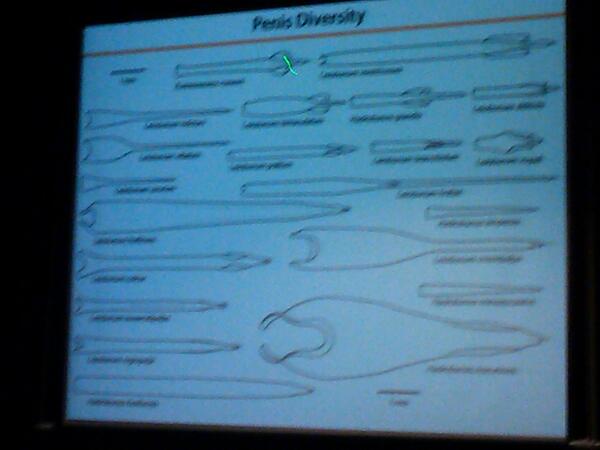 - see clearer image or read more about it
- see clearer image or read more about it
Brantley: one change is that the litter layer is going away, & that's really affecting the linyphiids
Brantley: even though sites close, had v diff results; ongoing drought & fire changing forest stand structure
Brantley: the mountain grassland site looks like recovery, but mixed conifer not so much
Brantley: we set out pitfall traps immediately after 2011 & '12 catastrophic fires
Next: Sandra Brantley, Changes in spider communities following wildfire in northern New Mexico
Shultz: ...& the practice of grouping species into female choice vs sexual conflict is not supported
Shultz: plotting measurement of muscles involved in forced entry & operculum closing suggests coevolution
Shultz: & some opercula have barriers, suggesting conflict. Sacs & no barriers tend to go together, & seem to be ancestral
Shultz: in leiobunine harvestmen, a good deal of penile and operculum diversity. Some penes have sacs for nuptial gifts
Shultz: evolution via female choice vs sexual conflict are seen as conflicting concept but may be more of a continuum
Shultz: reproductive structures have to evolve fast enough to keep up with speciation, but need to reflect evolution as well
Next: Jeffrey Shultz, Biomechanical diversity of reproductive structures in leiobunine harvestmen
Cruz da Silva: looked at web-building vs hunting on water groups; web builders tend to have reduced piriform glands
Cruz da Silva: Hygropoda, Nilus & Neotropical were major groups
Cruz da Silva: 77 taxa, 35 known genera; interestingly Senoculidae came out closely related
Cruz da Silva: pisaurids, known for their nursery webs & male nuptial gifts, have a worldwide distribution
Next: Estevam Cruz da Silva, Phylogeny of the nursery web spider family Pisauridae
Alvarez-Padilla: keep in mind, collecting in Mexico is fun, & there *are* some safe places to collect
Alvarez-Padilla: in imaging, if you're doing standard views, 15-20 views should cover most of animal surface
Alvarex-Padilla: 14 yrs after Coddington et al. on sampling protocols "I return to Mexico & nobody has used it"
Alvarez-Padilla: only been 12 faunistic studies in Mexico, lack vouchers, morpho species ID'd only as "spp"
Alvarez-Padilla: 4th, comparative online databases linked to papers, 5th voucher specimens
Alvarez-Padilla: 2nd tool is robust tools to measure diversity, 3rd is standard sampling protocols
Alvarex-Padilla: I can tell you that the Platnick spider catalog is the envy of all entomologists
Next: Fernando Alvarez-Padilla, Faunistic inventories in Mexico: A comparative approach
Mallis: found precursors of the spigot in very early instars
Mallis: starting in 2nd instar, you see a grouping of a modified spigot w 2 flanking structures
Mallis: We prepared spigots of each instar for SEM. Few studies have looked at spigot ontogeny
Mallis: ... is at a strategic position, taxonomically, for this study 2/2
Mallis: Besides "being in my opinion being one of the most beautiful spiders in the world," T. perfuga... 1/2
Mallis: a lot has been done on araneoid silk, less on cribellate silk
Next: Rachel Mallis, Spigot ontogeny in Tengella perfuga: preliminary mapping results on silk production in cribellate spiders #arachnids
Ryan Bell @spiderwrangler Displaying phylogenetic trees is always tough for the audience to follow and see. Zooming with Prezi is a big help.
Almeida-Silva: the new family is sister to the Oval Calamistrum Clade & Fused Paracribellar Clade
Almeida-Silva: Our new family - w 26 genera, 13 newly described - is supported by 4 synapomorphies
Almeida-Silva: Macrobuninae, once the biggest amaurobiid subfamily, is now shown to be only distantly related to Amaurobiinae
Almeida-Silva: family Amaurobiidae has been known as a trashcan. Amarobiinae subfamily seems to be monophyletic #arachnid14
First up: Ina Maria Almeda-Silva, Cladistic analysis & revision of Macrobunidae new rank
We're about to get started w this morning's program at #arachnids14, Taxonomy & Diversity, moderated by I-Min Tso
Good morning & happy Monday. See some pics from our fun arthropod activities last night at
Sunday evening, June 22 - Casual Night with the Arachnids
Look, a Schizocosa ocreata male courting! 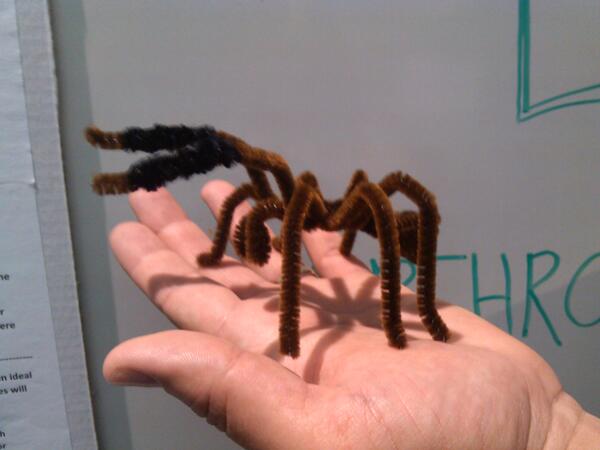
Amazing biomechanics - this model demonstrates how bugs extend their legs 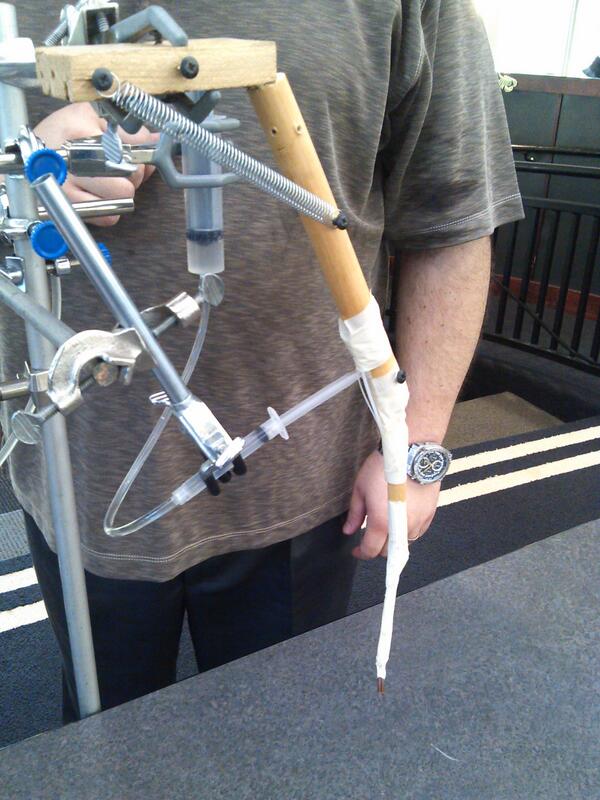
Meanwhile, Dr Rovner answers those questions one always wanted to ask about spiders 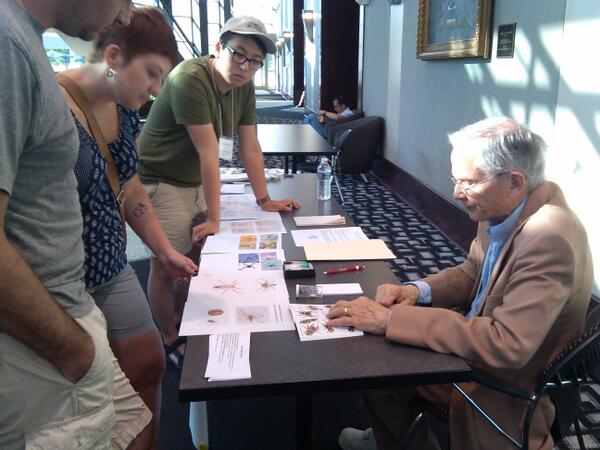
Ryan Bell @spiderwrangler Why yes, that is a Schiz made out of pipecleaners... 
A good day at OSU #arachnids14 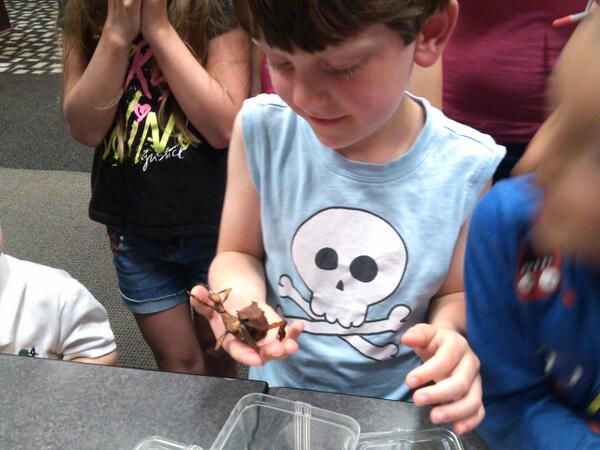
Arthropod experiences in progress 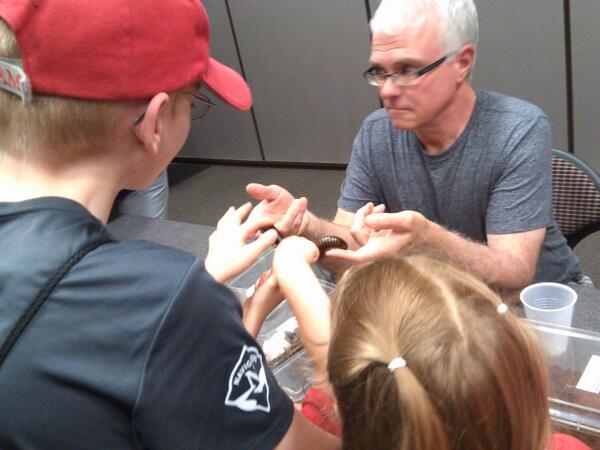
This African millipede demonstrated to dozens of people how to move dozens of legs all at once 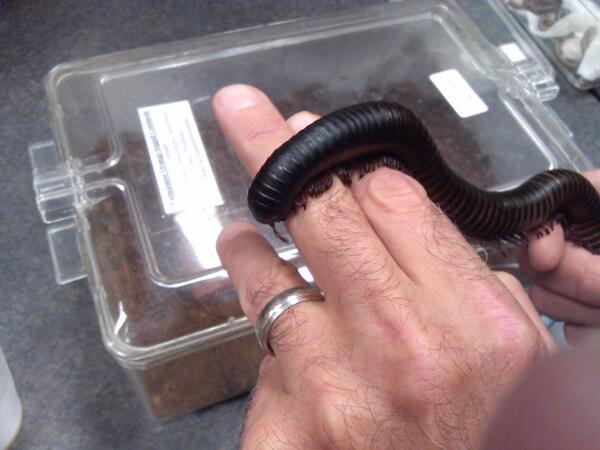
A large Australian walking stick. The males fly, & visited several of our guests 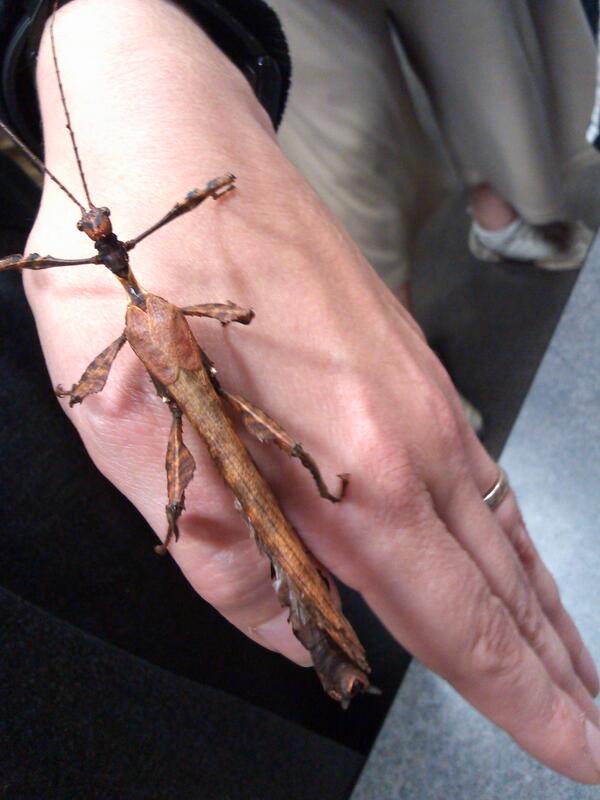
In the #arachnids14 arthropod petting zoo - petting, oohing & ahing in progress 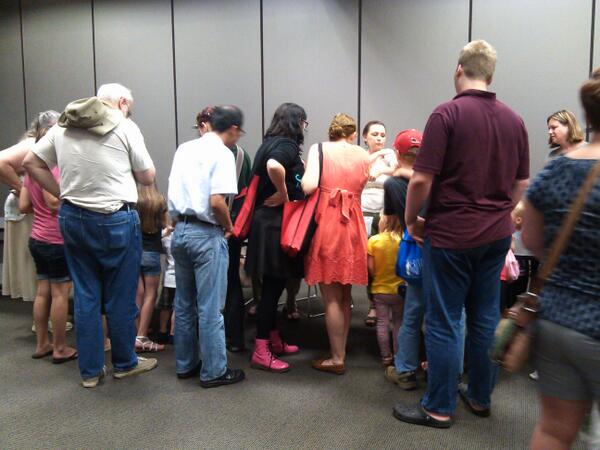
Some scenes from Casual Night with the Arthropods, #arachnids14's public event - complete with petting zoo 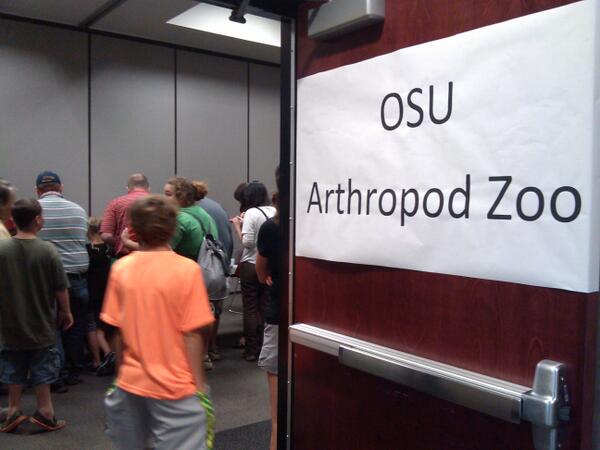
See more of Joe Warfel's arthropod photography at eightheyephotography.com
A young opilionid molting, photo by Joe Warfel. That whole long leg has to be pulled out 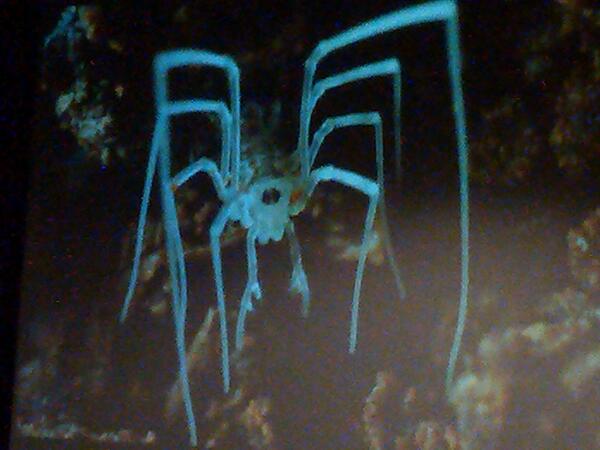
A whole LOT of opilionids gather under a picnic table, photo by Joe Warfel 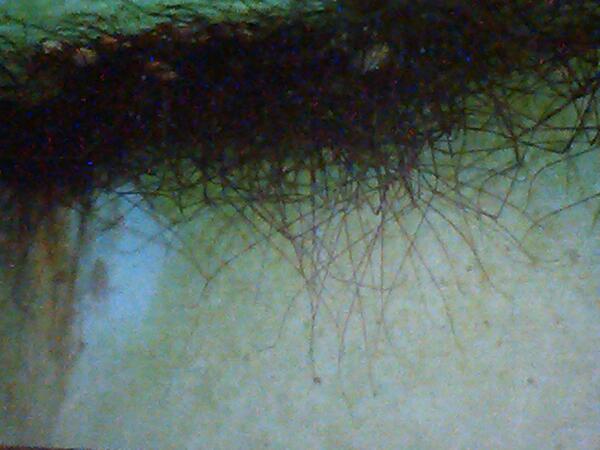
A different opilionid, Caddo agilis, photo by Joe Warfel 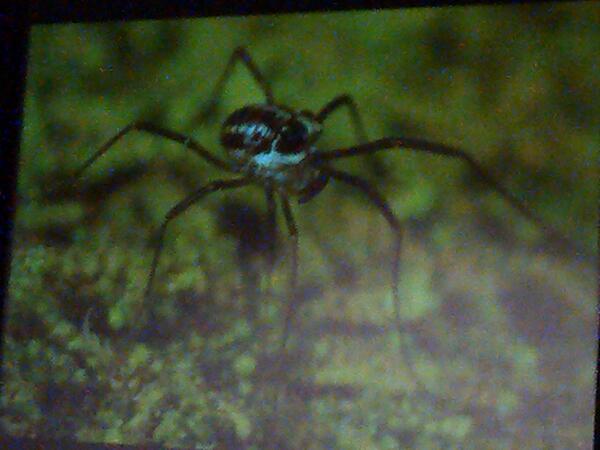
An opilionid (harvestman), family Sclerosomatidae, photo by Joe Warfel 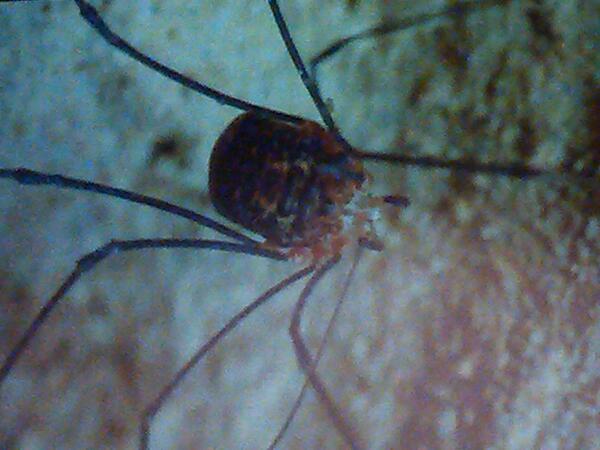
A fluorescing scorpion peers out of its burrow, photo by Joe Warfel 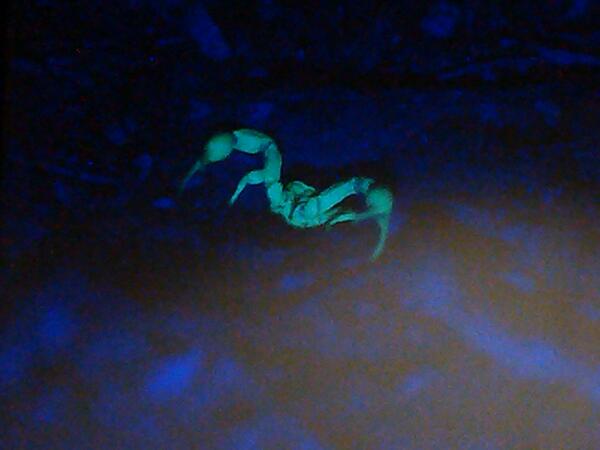
The face of an amblypigid, photo by Joe Warfel 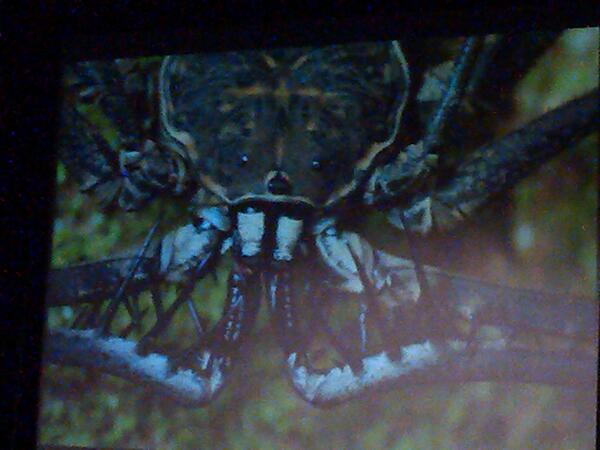
A schizomid, photo by Joe Warfel 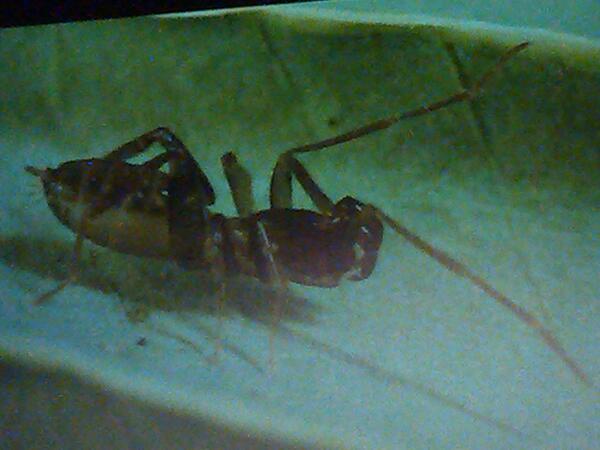
A pseudoscorpion, photo by Joe Warfel 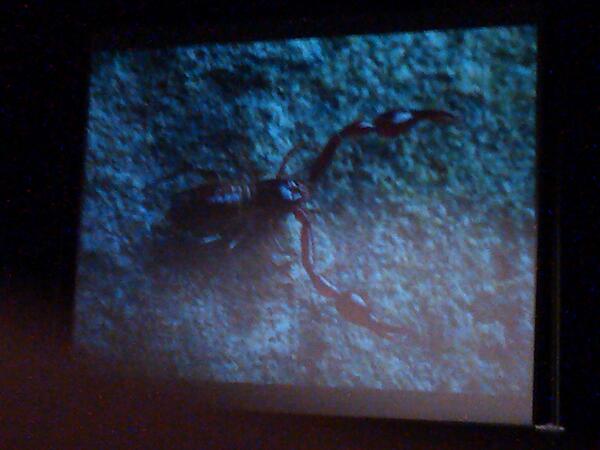
This is Liphistius, a primitive spider from Asia with abdominal segmental scuta 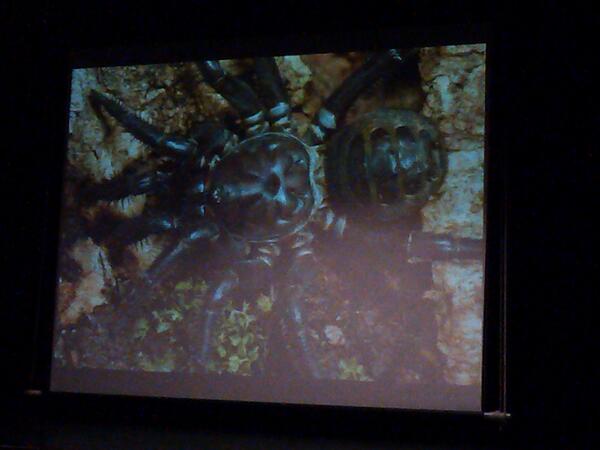
And now a few highlights from Joe Warfel's slides...
kissmeimpatrick86 @kissmeimpatrick @SpiderAnderson #Wisconsin #spiders #arachnids14 #tarantula #insects #bugaboo #bugs #WorldCup2014 #Wimbledon2014 #wow 
Scariest monster I've seen all day! 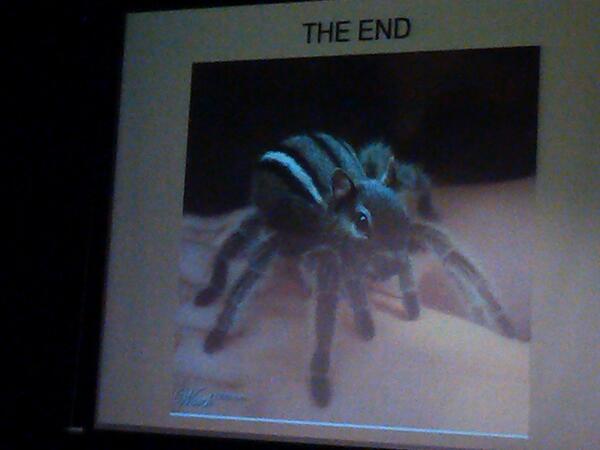
Once people became aware of MRSA infections, the number of alleged brown recluse bites reported to Rick fell to like 1 a year
Now THIS is a brown recluse... 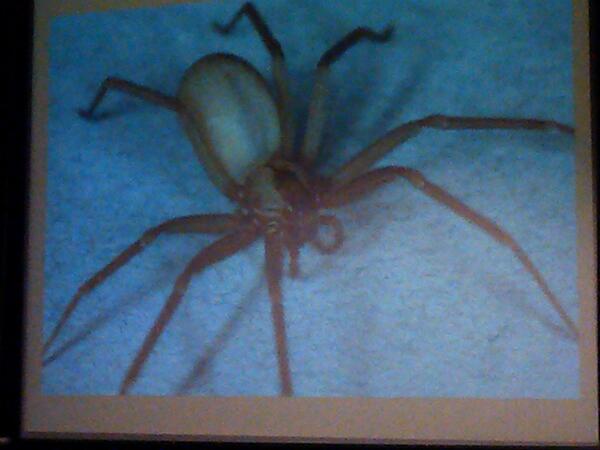
If your spider has markings or big hairs or makes big webs between trees - IT IS NOT A BROWN RECLUSE
Rick Vetter is talking about people's misconceptions about brown recluse spiders
George tells us that using video to study wolf spiders & jumping spiders has taught us that they're smarter than we thought
George Uetz tells us that we can't see out of the back of our head, but jumping spiders can. Also they like to watch videos
J. Andrew Roberts @spiderprofessor So, uh, size matters to the ladies if you're wolf spider. Wow!
George Uetz tells us that we can't see out of the back of our head, but jumping spiders can. Also they like to watch videos
And now, an audio an audio recording of the brown recluse spider's mating call
We saw a closeup of the spit coming out of the spider's jaws, & then hear the sound the squirts make 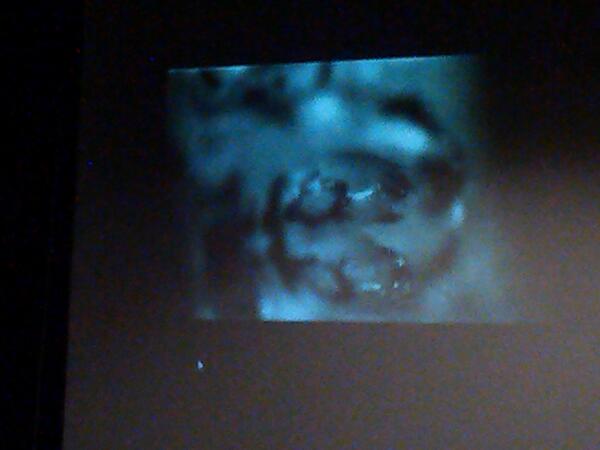
Look, a spitting spider spitting 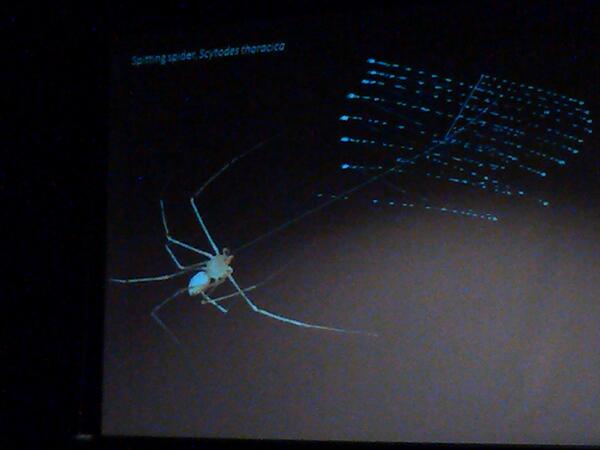
J. Andrew Roberts @spiderprofessor Bob Suter: I recorded from a spitting spider head...
Mr. Belcher @kyspiderguy Had a great time teaching little kids to make hand spiders at community event night
Bob Suter is showing us a fishing spider jumping on the videos of a fishing spider jumping on the water. Now it escapes a frog!
Meera Lee Sethi @gruntleme Extraordinary. MT @nsandlin Cara Shillington radio-tags male tarantulas to learn how they live 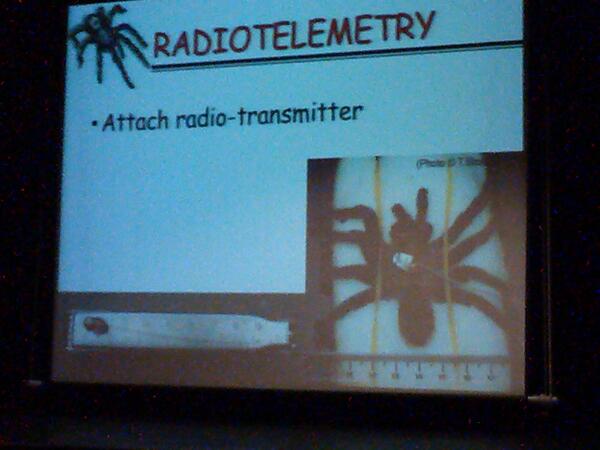
J. Andrew Roberts @spiderprofessor cyborg tarantulas? No way, that's a radio tag!
Cara has actually been radio-tagging male tarantulas to follow them electronically & learn how they live pic.twitter.com/xCpRA4c6vx
Cara Shillington tells our public guests at #arachnids14 about the lives of tarantulas ... the babies are very adorable
Doug: we go out on the sand w a blacklight & catch scorpions when they fluoresce. It's one of the best things you'll ever do.
Doug describes the experiments he does in his lab to learn about the weird brains & nerves of scorpions 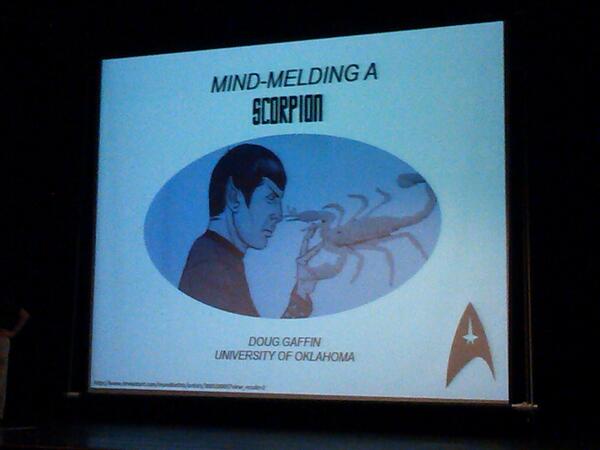
J. Andrew Roberts @spiderprofessor now that is an excited scorpion...
J. Andrew Roberts @spiderprofessor Scorplings!
Starting talks at Casual Night with the Arachnids, the public portion of #arachnids14 Doug Gaffin is presenting "Mind Melding with a Scorpion"
OH at #arachnids14 arthropod petting zoo: Kid: Is that from Australia? Scientist: Yeah. Kid: That's where I'm going to go live when grow up!
Science On Google+ @ScienceOnGoogle Getting ready to start our Casual Night with Arachnids! Watch on #YouTube & join conversation using #arachnids14 View media
Science On Google+ @ScienceOnGoogle Want to see #spider relatives harvestmen, #scorpions mites & ticks in action? Join us in 30 mins for #arachnids14 View media
Science On Google+ @ScienceOnGoogle Our Casual Night with Arachnids starts in 1hr! Chat on exciting #spider research using #arachnids14 View media @spiderprofessor
Sunday afternoon, June 22
That's the last talk today. Tune in 6pm for Casual Night w Arachnids. Questions answered, lore shared & reportedly a G+ Hangout
Dodson: so, comparing Misumenoides formosipes & Misumena vatia, we see a lot of variation in the relevant factors
Dodson: they have low density, but sex ratios vary, Mating systems vary (scramble competiton vs. scramble + fights)
Dodson: hypotheses all assume males move around more than females. Using 2 thomisid spp, this is true
Dodson: various hypotheses have been put forward, many focusing on selection for locomotory ability
Dodson: as we know, spiders are way on the female end of the sexual size dimorphism scale
Next: Gary Dodson, "What's up with the dwarf males?"
Huang: There was considerable incongruence between BAF values & biodiversity results
Huang: set up 180 sampling plots at 8 univ campuses in central Taiwan, counted spiders, inseccts, herbaceous & woody plants
Huang: BAF evaluates land-use surfce types, homogeneous zones & landscape mosaics. We compared that to biodiversity
Next: Pao Shen Huang, can BAF reflect eco effectiveness of urban areas? A case study on campuses in central Taiwan
Chang: vegetation mix & spider diversity was not congruent w BAF designation, maybe partly since we only counted adults
Chang: BAF level was assigned by expert based on aerial photos. We measured spider diversity of same areas
Chang: When a city designer meets an ecologist: the biotype area factor (BAF), to evaluate eco effectiveness of urban areas
Next: Shao-Tzu Chang, can BAF index reflect biodiversity pf landscape mosaics in coastal areas? Spiders as indicators
Seaborn: Daily max/min closer in my data than in USFWS & wx sta data. So bryophyte matts stabilize temps
Seaborn: also had USFWS HOBO data & data from weather station at Mt. Leconte. Ended up w a lot of data
Seaborn: I put waterproof data loggers under the moss matts to understand microhabitats
Seaborn: Microhexura montivaga is a federally endangered spider found under moss matts on high N-facing slopes in Appalachia
Next: Travis Seaborn, Abiotic microhabitat parameters of spruce-fir moss spider
Potts: put spiders (Mermessus fradeorum) in chambers w & w/o sundews. There did not seem to be exploitative competition
Potts: but what about web-building spiders? I picked a linyphiid spider w similar prey-capture strategies & prey animals
Potts: A previous study found that wolf spiders compete w sundews but stealing prey directy from the plant
Potts: carnivory has evolved multiple times in plants. I used the sundews (Drosera), wh are common in bogs
First up: Leslie Potts, Interactions in a tangled web: competition between spiders & carnivorous plants
Now the Ecology session, moderated by Kenneth Cramer
Questions about other arachnids also welcome at #arachnids14 Casual Night. Tweet them now to @spiderprofessor for answers 6-7pm tonight
Do you have questions about spiders? Tweet them to @spiderprofessor & they'll get answered 6-7pm at #arachnids14 Casual Night!
And that's it for the behavior session of #arachnids14, where it's all about how to behave to stay in an non-eaten state
Tso: Attacks on C. ginnago were more frequent when only decorations were darkened, vs deco & spider body
Tso: Ariamnes cylindrogaster has needle-like twiggy body. Dummies w tucked-in legs had fewer attacks than ones w legs spread
Tso: Cyclosa ginnaga puts decorations in its web to look like bird droppings
Tso: many variations on theme of spiders needing strategy to counteract strategy they use to attract prey, to avoid predators
Next: I-Min Tso, Evidence for effectiveness of spiders masquerading as bird droppings or twigs
Clark: ~90% of toads oriented to courting male, ~60% to walking males, & 0% to males sitting still
Clark: if toad oriented to iPad, they'd almost always come right up & attack (lick the screen)
Clark: showed toads videos of the spiders on iPads, measured detection latency (time) & attack probability
Clark: we showed videos of courting vs walking males in different conditions to a predator Bufo americanus, the American toad
Clark: we have a lot of data on their courtship displays, including female attraction & unwanted attraction of predators
Clark: the Schizocosa ocreata wolf spiders & their mating behavior have been studied in the Uetz lab for more than 3 decades
Clark: mating displays need to be conspicuous to be effective, but this also puts them at risk
Next: David Clark, Risky courtship behavior of male wolf spiders
Chapin: of the game theory models for invert contests, "self assessment" (how big you are) was best fit
Chapin: often the fight ends when one runs away, but size-matched contests more often end up in cannibalism
Chapin: results of interactions show the whip spider is territorial. Next, who wins? Bigger ones w more pedipalp display
Chapin: if it's about territory, does one - the resident - value the territory than the intruder?
Chapin: whip spiders (ampblypygi) walk on 6 legs & engage in agonistic interactions. What do they fight about?
Next: Kenneth Chapin, Contesting territories: Asymmetric resource value & assessment strategies in whip scorpion
Chang: White- & brown-clypeus spiders got similar numbers of non-flying insects, suggesting the coloration targets the former
Chang: used hair removal treatment to give some Heterepoda dark clypeus. White faced ones got lots more flying insects
Chang: Heterapoda has a bright white clypeus, with higher reflectance than its brown body
Chang: some nocturnal spiders such as orb weaver Neoscona & wandering Heterapoda, have conspicuous markings
Chang: we know bright coloration can serve as a lure for prey in diurnal hunters, what about nocturnal ones?
Next: Chia-Chen Chang, Conspicuous markings of a night-wandering spider attracts flying prey
Sitvarin: for smaller frogs, those that jumped more tended to be captured more often
Sitvarin: factors most predictive of whether frog would be captured are relative mass & how much they jumped
Sitvarin: captures occurred in about 25% of trials, about half the attacks came from behind the frog
Sitvarin: used cricket frogs, which are ~half the size of a penny, & wolf spider Tigrosa helluo
Sitvarin: Among invertebrate predators of frogs, spiders are No. 2, behind water bugs, an under-studied interaction
Next: Michael Sitvarin, "thinking about frogs &things that eat them"
Mukhtar: collembola in "mixed" arena did not differentiate among the spiders based on diet cues
Mukhtar: collembola in arena with wolf spiders fed collembolans spent more time & moved more than those w cricket-fed spiders
First up: Muhammad Khalid Mukhtar, effect of diet-associated cues from a wolf spider on collembola, its prey animal
Ryan Bell @spiderwrangler Casual Night With Arachnids at the Reese Center on the OSU Newark Campus, 6pm! #science
We are back from lunch & about to start the Behavior session, moderated by Gary Dodson
Sunday morning, June 22
Thank you @lilyorit for the spider anesthesia question & presenter Sean Koebley for the answer
Answer pt 2: put spidey in Tupperware, waft in CO2, once the legs curl in you have abou 1 min to immobilize it
We had a question about an earlier presentation: "How do you anesthetize a spider?" Answer pt 1: carbon dioxide
That was it for this session, time for lunch!
Herrmann: stressed spiders had lower levels of dopamine, serotonin & epinephrine, &higher levels of octopamine
Herrmann: kept in dry container, then rehydrated enough to collect hemolymph
Herrmann: I looked at water stress. Spiders are esp prone to dessication given their great area relative to mass
Herrmann: octopamine is kind of considered the "fight or flight" indicator in invertebrates
Herrmann: octopamine related to many behaviors such as bee waggle dance, and is released in response to stress
Next: Samantha Herrman, "Stressing out!" Effects of stress on biogenic amine levels in wolf spiders
Kozak: this was the first time as far as I know that cross modal integration was demonstrated in any invertebrate
Kozak: they did recognize signals as coming from diff individuals, & went back & forth between them
Kozak: results suggest that they may have interpreted visual as multimodal, as in "ventriloquist effect"
Kozak: the females were more attracted to visual signal than vibratory, but most to combined (multimodal)
Kozak: can female wolf spiders recognize & differentiate multimodal signals, in synch and out of synch
Kozak: in "ventriloquist effect" we combine two signals that are offset - the dummy's mouth is moving more so he's talking
Kozak: wolf spiders can be courted by multiple males using multiple modes of communication (tapping, waving...)
Next: Liz Kozak w a behavioral interloper talk on cognitive cross-modal integration in wolf spiders #arachnids
Hsiung: different hues can be created by varying thickness of layers; iridescence can result from interaction w other layers
Hsiung: the blue has periodic nanostructures, while black & brown have no conspicuous periodicity
Hsiung: the blue hairs have a smoother, more cylindrical structure than black & brown hairs
HSiung: colors created by periodic nanostructures (photonic crystals) are called structured colors, can be very vivid
Hsiung:color is a complex feature, comprising light source, absorptive material & observer who can see that part of spectrum
Next: Bill Hsiung, Structural based blue appearance in tarantulas
Long: eyes are connected to proto-cerebrum by "optic neuropils," w a lot of diversity in details of structure
Long: spider brains have 2 regions, the sub-esophogeal mass & ptoto-cerebrum, wh handles visual imput & is the "thinking part"
Long: I had to develop a new method to get thick whole-head sections of spider cephalic regions
Long: spiders have more complex anatomy for brain dissection, as cephalothorax is on part w many organs in there
Long: insect neuromorphology & its relationship to behavior has been studied a lot, not so for spideys
Next: Skye Long, spider brain morphology (which is very under-studied)
Casem: cells of post-egg-production state seem to use autophagy to return to base state
Casem: tubiliform glands undergo dramatic changes in size & cellular structure as spider enters & leaves egg-producing state
Casem: tubiliform silk is used to surround & protect the egg mass
First up, Merri Lynn Casem on changes in the tubiliform silk gland in the Western widow when she is about to lay eggs
We're starting the Anatomy & Physiology section moderated by Doug Gaffin
That's it for this session, we are off to have coffee. Anatomy & Physiology after the break (10:45 ET)
Mr. Belcher @kyspiderguy Bell's quote: "Few failures in the life of an organism are as unforgiving as the failure to avoid a predator" by Lima & Dill '90
Bell: and this data was remarkably unequivocal, altho they do respond to cues on the substrate
Bell: in this study, Schizocosa ocreata exhibited no difference in behavior at all when exposed to airborne predator cues
Bell: in prev studies some spiders have been able to detect volatile cues (airborne chemicals) from predators
Bell: succesfully avoiding a predator is very important to staying alive...
Next up, Ryan Bell, response of S. ocreata to volatile cues of an intraguild predator (not a web talk)
Piorkowski: prev studies had seen no change in extensibily, which may have been an artifact of study methodology...
Piorkowski: extensibility changed, but stiffness & strength stayed about the same at diff ages
Piorkowski: do silk properties change as spider matures? Extruded Nephila pilipes silk at 4 speeds...
Piorkowski: when stretched, the silk loses water & its inner structure becomes more ordered, It's stronger & stiffer
Piorkowski: the dragline silk has an internal structure of "blocks & springs" w at disordered structure when extruded
Next: Dakota Piorkowski, ontogeny of silk tailoring potential: do large spiders conserve silk diameters to optimally forage #arachnids
Koebley: measured elastic modulus (stiffness) & extensibility, both were in line w or surpassing properties of orb web silk
Koebley: the silk has fibers ~ 7-8 nanometers long, never observed before on any silk, wh we called nanopapillae
Koebley: Br recluse silk being flat is perfect for AFM, it's ~6-8 microns wide, 40-80 nanometers high, so very thin #arachnids
Koebley: we anasthetize the brown recluse, restrain it, reel out the silk. To measure we use atomic force microscopy
Koebley: orb weaver silk is a cylinder ~3-5 microns in diameter - but Loxosceles is nothing like that. It's flat!
Koebley: as you know, silk is a unique in the materials world, dragline silk of orb weavers has been most studied
Next: Sean Koebley, Brown recluse spider's amazing nanometer-scale ribbons of stiff, extensible silk
Stellwagen: so really intersting from a material sci standpoint: UV just doesn't seem to affect it at any level
Stellwagen: gathered webs in the AM when they're fresh, stretched in a film-development box in the lab at diff UV exposures
Stellwagen: Japanese researchers working with silkworm siilk found the silk protein sericin is an antioxidant
Stellwagen: webs out in the sun all day, how does UV affect then? 3 types of UV: A, B & C
Stellwagen: previously showed how temperature affects stickiness - similar to honey in fridge vs in sun
Stellwagen: and if you even breathe on them, the droplets will swell before your very eyes - humidity response
Stellwagen: the viscous droplets when flattened in lab separate into different materials
Next: Sarah Stellwagen, UV-B irradiance doesn't influene the extebsibility of adhesive viscous orb web droplets
Amarpuri: the work has practical application for adhesives that work in humid environments #arachnids
Amarpuri: this showed a homogeneous structure with both salt & protein found throughout the droplet in similar proportions
Amarpuri: using Raman spectroscopy, which relies on shift in energy from the ligtht to study vibration etc.
Amarpuri: the combination of glycoproteins & salt makes the glue viscoelastic & humidity responsive
Amarpuri: the glue droplets are produced by Rayleigh's instability wh makes them bead up, and is viscoelastic
Next: Gaurav Amarpuri, on how homogeneous structure of glue-droplet explains the superior adhesive performance of spider silk
Folks, if you have questions or comments on the arachnology research being reported here, give a shout
Opell: we saw that much longer threads contribute to overall insect capture efficiency than we had previously thought
Opell: measuring the tangential force at each droplet to compute maximum span efficiency...
Opell: stretching a viscous thread in a specially desinged piece of eqpt & imaging it showed a parabolic shape
Opell: Bob Suter had noted that engineers design suspension bridges to be shaped like a parabola, see if spiders do the same
Opell: previously they measured relationship of thread length to stickiness & each droplet's contribution to stickiness
First up, Brent Opell re-examining the suspension bridge mechanism of an orb web's viscous threads
We're getting started, first session is Webs & Silk, moderated by Merri Lynn Casem
Saturday afternoon, June 21
Science On Google+ @ScienceOnGoogle Brown recluse spider has potential medical importance but myths exaggerate its status. We'll tackle in #arachnids14 http://buff.ly/T6XwAq
They also jump on semis, & pull ostriches into trapdoors. And there are burrowing orb weavers.
This eve we had Eight Legged Freaks for #arachnids14 movie night. Jumping spiders hunting in packs to kill teenagers on dirt bikes!
Oct 22, 2005, was the octagon moonrise ceremony. The next one will be 18.6 years from then. See you there?
At the "matching" earthworks in Chillicothe they were celebrating the solstice today...
An artist rendering of the Hopewell site, from a dinner talk by Dr. Brad Lepper, the expert on these structures 
Plaque from the Hopewell site. The structures rectify the circumference & map 18.6-year lunar cycles 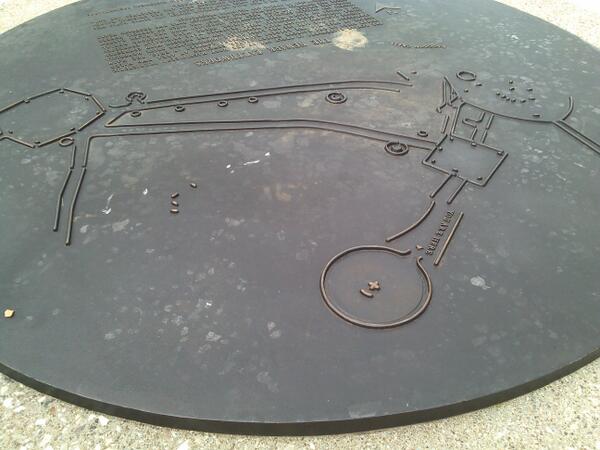
After posters we went to see the Hopewell Earthworks, a remarkable place 
Web-invading theridiid eating her linyphiid web host, from a gut-content analysis by Karen Cangialosi 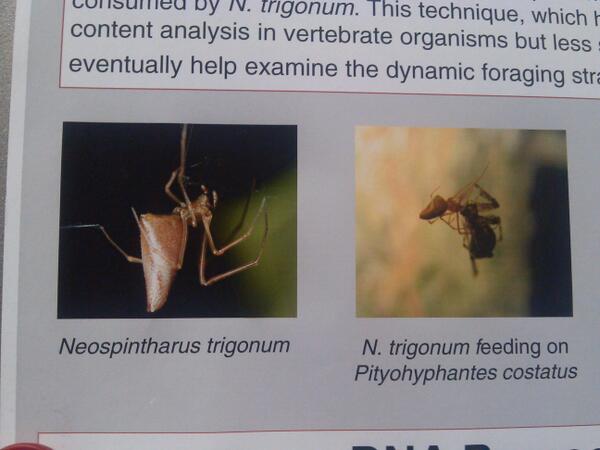
Anelosimus studiosus aggressively guarding her egg sac on a Q-tip, by JB Price 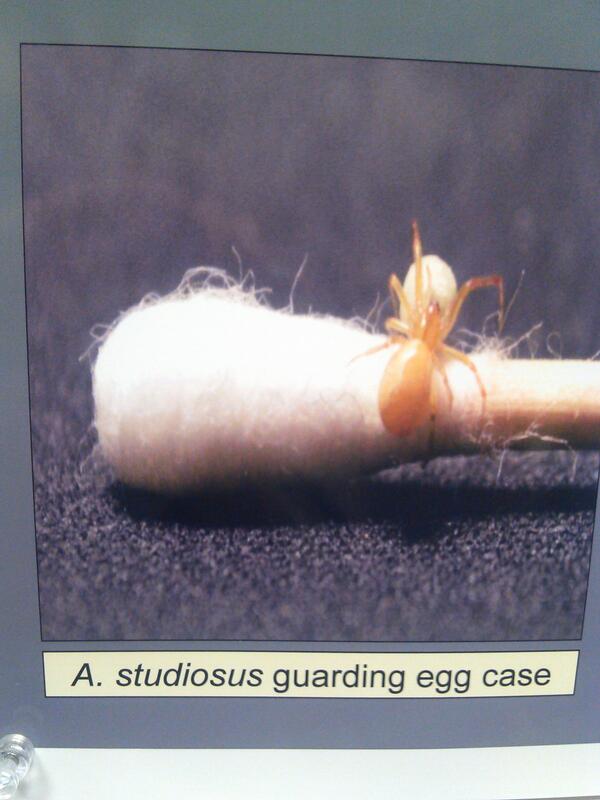
The scarcely-believable phase of spider ontogeny, from an embryonic staging system by EA Herrera 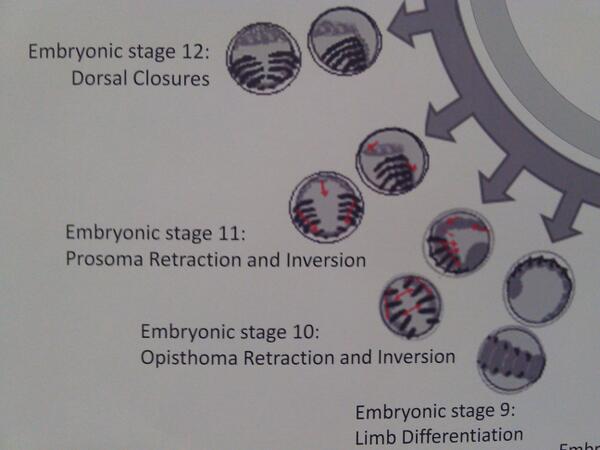
Remember the clock-watching Cyclosa from this morning? What she looks like in her web, by A Herrig 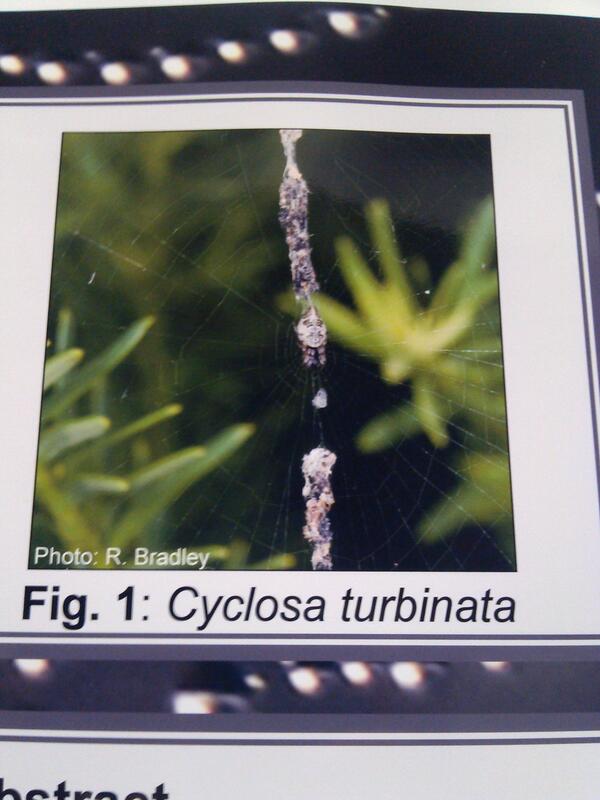
The thin-cuticled, dessication-prone schizomid - does it flee light?, by Sarah Jane Rose 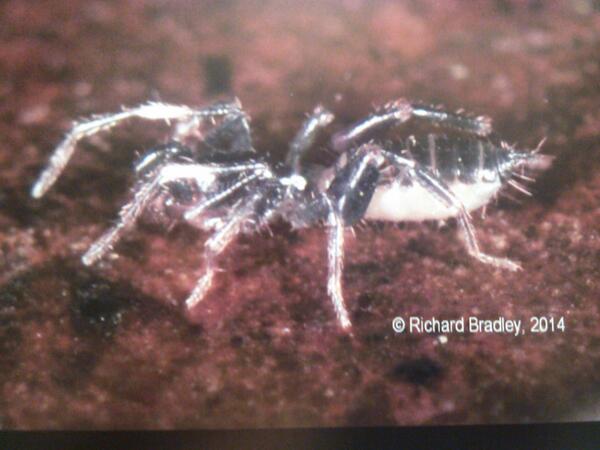
QR to listen to airborne mating sounds of Gladicosa gulosa, by Corey Vaughn 
Is chemo-photographic memory the key to scorpion homing, by Kyven Zhao 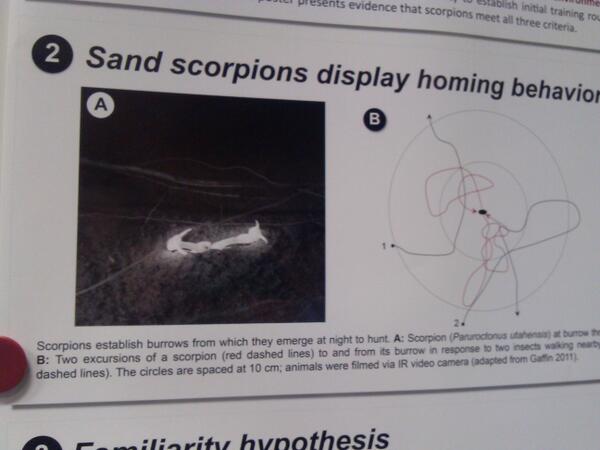
Secondary tropical forests have much more diversity, by Trish Masterson 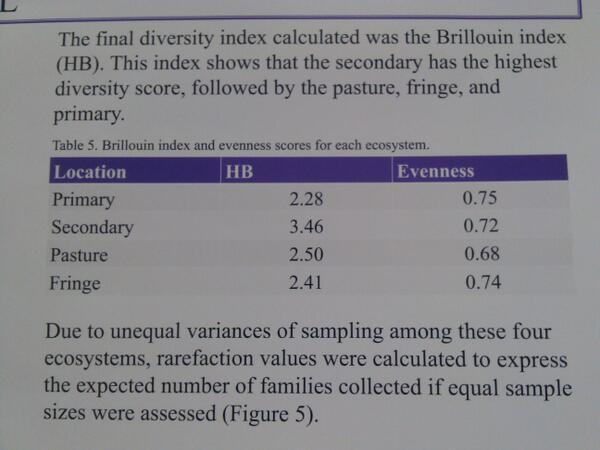
Biotope Area Factor examples from Taiwan parks, by Yiu-chin Leu 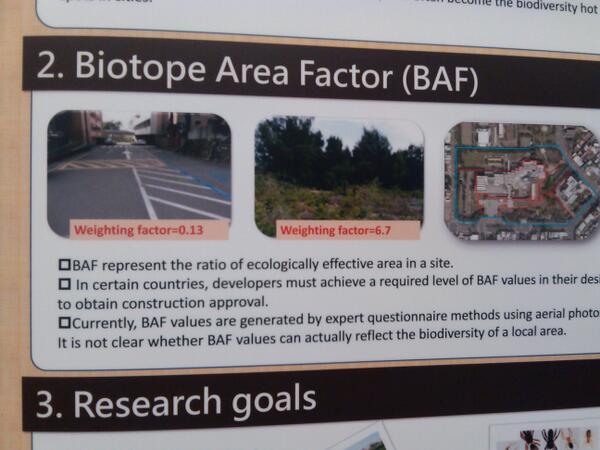
First some highlights from the poster session, shamelessly based on sharable visual elements (not on my "votes" 4 best poster)
And now some highlights from this afternoon and evening at #arachnids14...
Also, this eve a talk on Ohio's Hopewell earthworks over dinner
That's the last talk of the morning. We have the poster session in the afternoon, watch for highlights
Jones: the factors most profoundly important to the model were male density & how fast they moved across the substrate
Jones: avg & median for seismic contact was ~10 males w/in period, vis contact a bit less. Was that enough?
Jones: each cyber-spider had its own behavioral characteristics programmed in
Jones: but hey, there's a ton of data on Schizicosa ocreata data, so we were able to use it & program little cyber-spiders
Jones: there's a growing body of evidence that females get more choosy after seeing about ~45 males in the lab; & in the field?
Jones: as we know, Bateman's principle us that females *should* be choosy, but only if there are more males out there
Next, TJ Jones, Female's visual & seismic experience with courting males during courtship, last talk of the morning
Watts: Did not actually see *any* attacks on the spiders in the field over 1600+ observations captured on video
Watts: they are more likely to attack simulated prey at night, & more likely to leave the web hub to avoid simulated predators
Watts: spiders will accept prey items at all times in 24 hr cycle, but at different rates night & day
Watts: spiders confronted w a predator in the web show a much greater variety of behaviors than in the artificial arena
Watts: this builds on last year's Spiders on the Clock, testing classic adaptive rhythm hypothesis
Next, Colton Watts, ecological implications of Cyclosa turbinata diel rhythms of foraging & antipredator behavior
Gilbert: males infected as juveniles had lower courtship vigor, less symmetrical tufts, & lower mating success
Gilbert: Males who courted for 5 minutes had lowered immune response; actively infected males had most courtship vigor
Gilbert: we know courtship is energetically taxing for males. Males exposed to pathogens have higher immune response...
Next: Rachel Gilbert, relationship between immunity & multimodal sexual signaling in wolf spiders
Mitchell: but more-rigorous tests showed no variations, so thinking may be uses in my design...
Mitchell: using less-aggressive light levels than prev studies suggested scorpions may be attracted to green light
Mitchell: been hypothesized that photosensitve elements in their tails may suggest that the scorpion is "one big eye"
Mitchell: scorpion eyes only sensitive to one type of light (1 photoreceptor type), responce to UV may just be green bouncing
Next, Jacob Mitchell, "Glowing Green," - a new test of scorpion light sensitivity & its relationship to fluorescence
Persons: males just the opposite, oriented both to Earth & coils (altho not congruent w dir of field, oddly)
Persons: females showed no signif difference in orientation either in control or treatments
Persons: field was ~5x stronger than Earth's, so canceled external field, red light to minimize visual cues #arachnids
Persons: used the cute wandering nocturnal Tigrosa helluo, and Helmholz coil for mag field
Persons: lots of animals use magnetic cues/orientation, last year there was that study on dogs facing north to poo... #arachnids
Now: Matt Persons, do wolf spiders use magnetoreception
Jakob: Will also be able to do a study w a researcher who can connect the rig to central brain of the spider
Jakob: Michael Land suggested years ago that the spiders are looking for *legs* - will be able to test that
Jakob: when ALE are masked, they stop picking up movement
We're now seeing Phiddipus audax' retinas quiet when looking at a blank screen, vs twitching when looking at a cricket
Jakob: a challenge was calibration, since spiders are not sensitive to voice commands #arachnid
Jakob: salticids have had some tracking work done, & we expanded on that, had to get a special eye tracker built
Jakob: eye tracking in non-human animals rel rare, bec few eyes move. Main invert one was in stomatopods (mantis shrimp)
Jakob: I'm in an psych dept, and eye-tracking is done a lot, to understand how people read complex sentences or respond to ads #aracnids14
We just saw an awesome short video of the tubes moving inside a see-through jumping spider that Wayne Maddison found
Jakob: main eyes have best vis acuity of any land invert. Retina only 10 degrees but the tubes move
Jakob: salticid secondary eyes have a fixed lens that's part of the cuticle, about as good as the eyes of dragonfly
First up, Beth Jakob, tracking the eyes of jumping spiders, a window into perceptionStarting 2nd #arachnids14 morning session, Behavior, moderated by Jason Bond
Saturday morning, June 21
Dear all: If you see a mistake or have a question for one of the speakers at #arachnids14, give a shout to me or to the hashtag
And that's it for the morning taxo session at #arachnids14, after the break Behavior moderated by Jason Bond
Hedin: Some may argue it's a negative result for conservation biology, but I feel it needs to be based on the best evidence
Hedin: results clearly suggested 2 total species, not 4. This is supported by essentially identical palpal morphology
Hedin: genetic data best for this task, used mitochondrial & 8 rapidly evolving nuclear genes
Hedin: Highway dept came to me & asked "Is C. wartoni a species?"
Hedin: Cave spiders tend to vary cave to cave anyway ... there is no known same-cave sympatry among cave spiders
Hedin: C. wartoni is in a complex of 4 spp, described by Gertsch based on epiginal morphology
Hedin: Cicurina wartoni described from a single adult female found in a small cave, only adult ever collected
Hedin: If a species is not real, we don't want to waste scarce conservation resources to preserve it
Hedin: I'm going to argue that some species delimitations may be more important than others
Next: Marshall Hedin, Species delimitation in blind cave spiders in Texas
DiDomenico: cryptic sp formerly in S. peacheyi now S. briggsi in honor of Thomas Briggs for his dedication to opilionids
DiDomenico: another n sp named S. starretti in honor of Jim Starrett, who collected the first opilionid from this area
DiDomenico: specimen from Santa Ynez will be named S. ubicki in honor of Darrell Ubick
DiDomenico: Bayes Factor analysis delimited 13 spp, BP&P delimited 11-12 in S. sura group - 5 new ones she will describe
DiDomenico: Genetic data are well suited for species delimitation in morpho cryptic species
Next: Angela DiDomenica, Genus tree inference, genetic species delimitation & species descrip in opilionid Sitalcina sura group
Emata: ~8mya was xeric shift in Calif that created barriers to dispersion
Emata: est age of splits suggest Calicina taxa were present on Calif coast were present before formation of coastal valley
Emata: at 35mya, origin of lineage still v uncertain; major lineages in Calicina much more widespread
Emata: How did paedomorphy - retention of juvenile characters by the adult - in Calina develop, and when?
Emata: 4 well-recognized lineages of opilionids, Calicina is in Phalangodidae
Next: Kristen Emata, Molecular systematics, historical biogeograph & paedomorphic evolution of the harvestman genus Calicina
Carlson: congeneric pair strategy is very powerful. Use of next-generation sequencing in spiders is just beginning
Next: Dave Carlson, de novo assembly, characterization & comparative analysis of entelegyne spiders
Graham: taxa persisted in previously recognized Pleicstocen erefugia
Graham: we have microallopatry - big diffs w/in small geo spaces - but not pre-Pleistocene divergence
Graham: subspecies were not monophyletic, but have some strongly supported lineages
Graham: these deserts are testing grounds for reconstructing biotic assembly
Next: Matthew Graham, Phylogeography of large but little known scorpion from Mojave & Sonoran deserts
Bond: In our analysis, orbicularia not monophyletic, uloborids are sister to RTA clade
Bond: We present the first phylogenomic analysis of all spider lineages, based on transcriptome data comprising 327 loci
Bond: & in recent molecular work, some support for it, but weak
Bond: In Blackledge et al.'s work, it might look like morphology has rescued the monophyly of the orbicularia
Bond: We've had the idea that morphology isn't that informative...
First talk: Jason Bond on spider phylogenomics: history of Earth's most diverse predator lineage & orb web origins
The first session will be Systematics & Evolution, moderated by Brian Patrick
Dr William MacDonald, dean & director of OSU at Newark is giving a welcome...
Friday, June 20
Reese Center, Ohio State Univ at Newark, whence I'll be tweeting the #arachnids14 conf starting tomorrow 
PS. Good people of #NewarkOH feel free to bring critters in jars for our experts to identify & discuss #arachnids14 Sun 6-9 Reese Cnt OSU
Sunday 6-9pm will be Casual Night w the Arachnids at #arachnids14 - colorful spidey-lore galore for young & old! 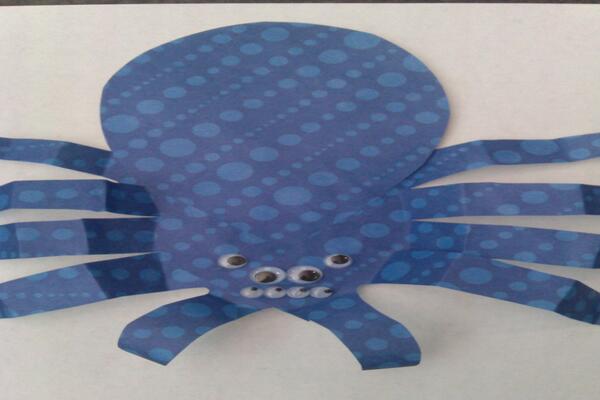
#arachnids14 mood pic RT Alex Wild @Myrmecos Friday Night Spider. Because you deserve one. (Tutelina elegans, male) 
Hi Alex from #arachnids14 RT Alex Wild @Myrmecos Tired of all those stupid arachnophobic "Nope" memes. So I made this 
Chris Buddle @CMBuddle I'm sorry I won't be there! (field work in Nunavut for me...) Have a great conference, everyone! #Arachnids14
Nina Sandlin @nsandlin And ... we're off to the spider conference (& other arachnids), yay! #arachnids14 
About this document
By giving multiple highlights from almost all speakers, I have exceeded the size that can readily be handled by the Storify platform, which I had used in previous years. This is thus a custom-gathered collection of tweets; those not identified are by me. I have taken the liberty of tidying the content by correcting misspellings and filling in some missing information. If any errors or ommissions remain, please let me know and I will set them right. My contact info is here.
